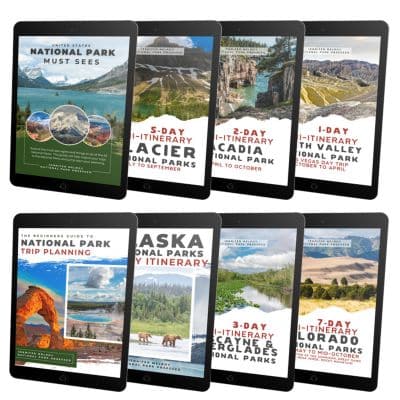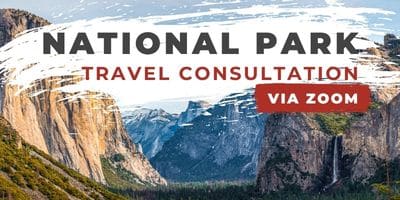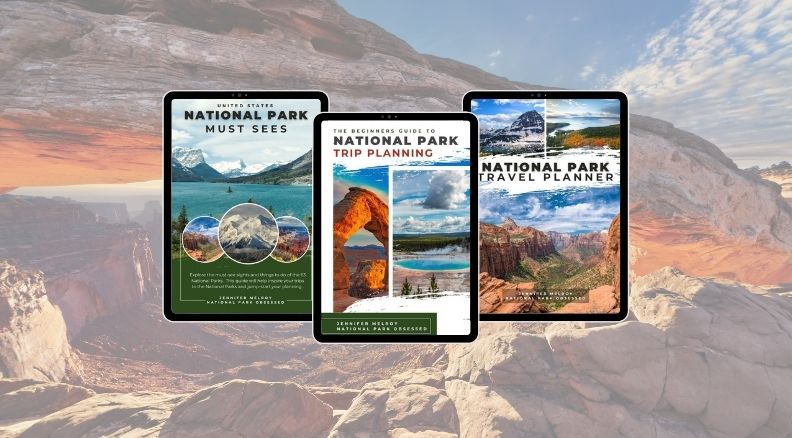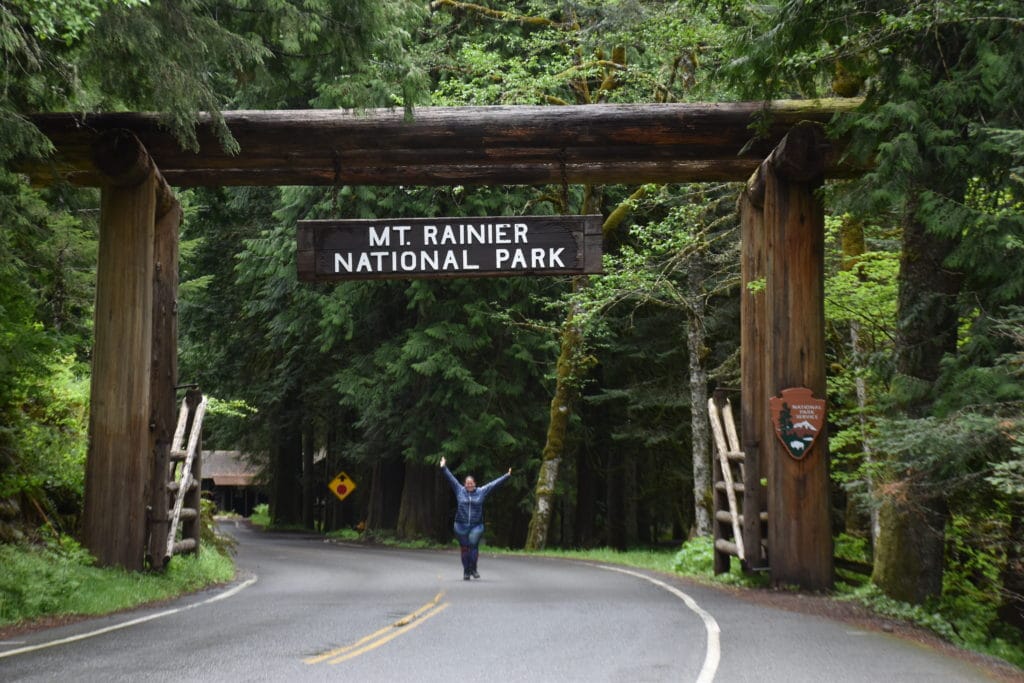
11 Things NOT to Miss on Your First Visit to Mount Rainier National Park
- Jennifer Melroy
- Last Modified September 20, 2022
- First Published on August 13, 2018



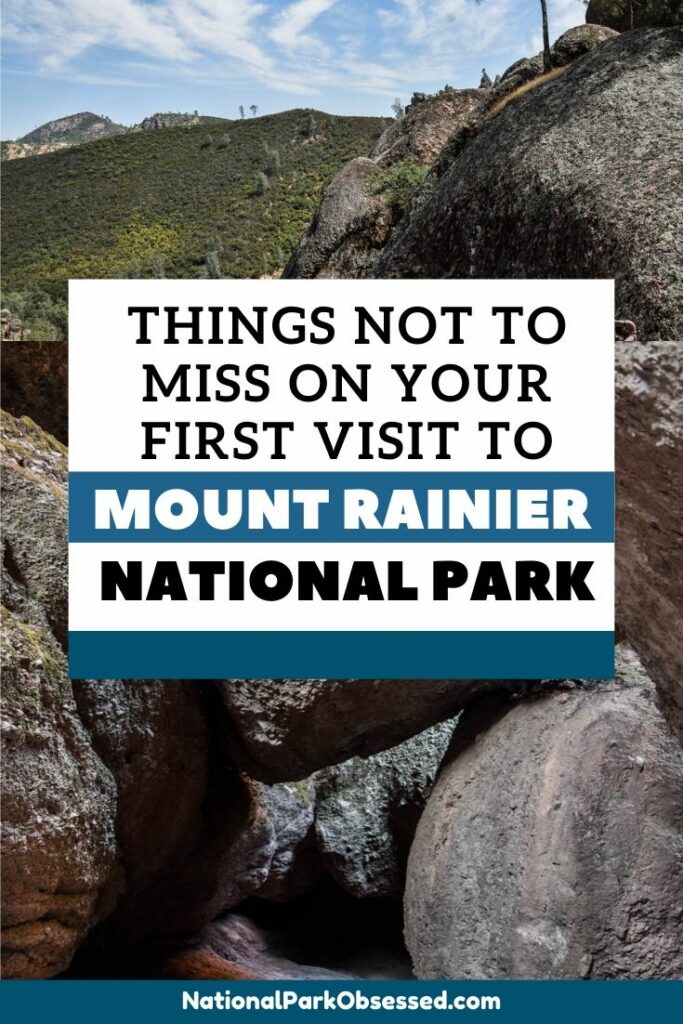


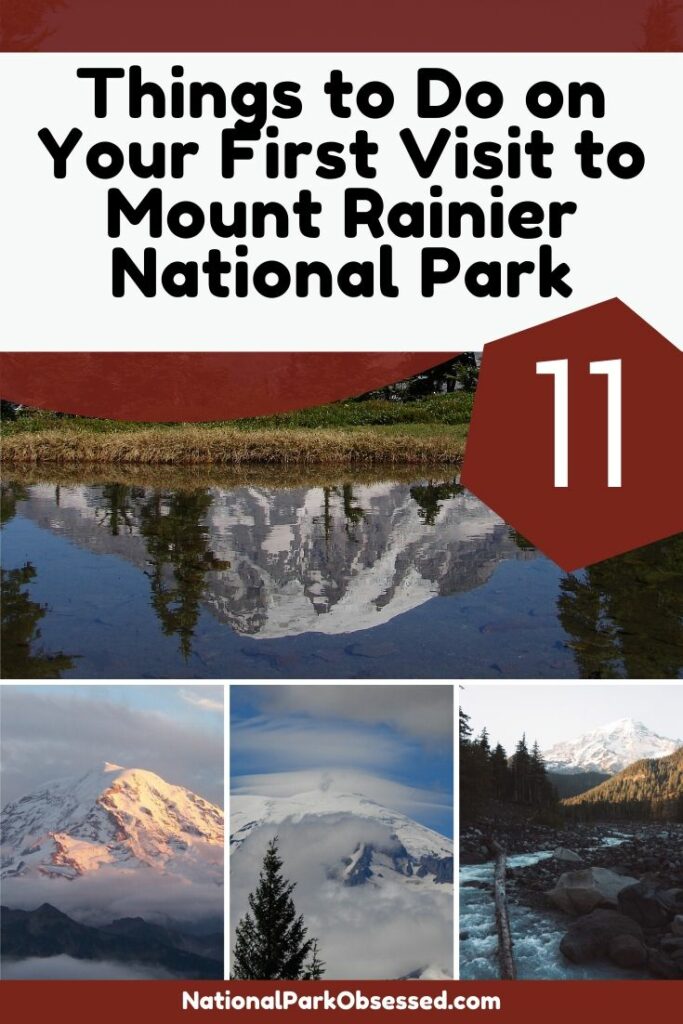
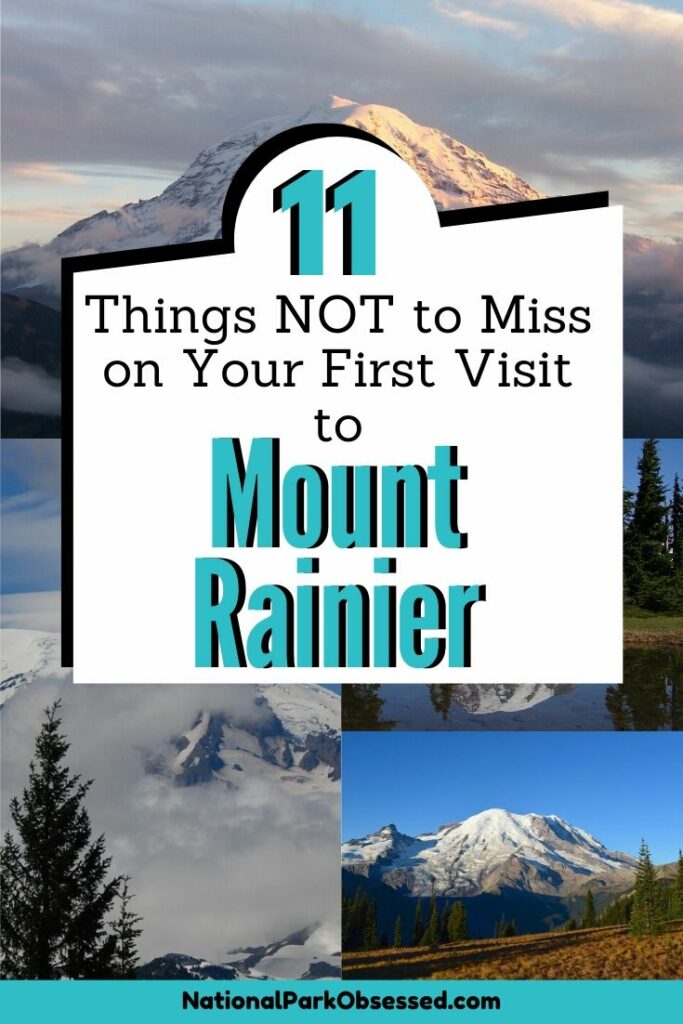
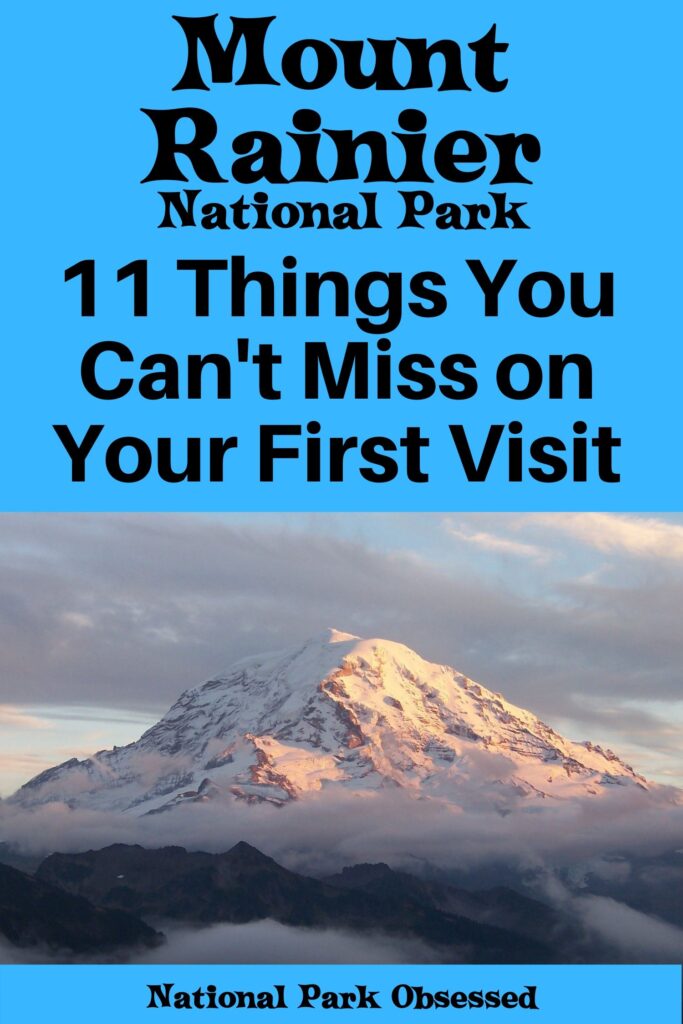
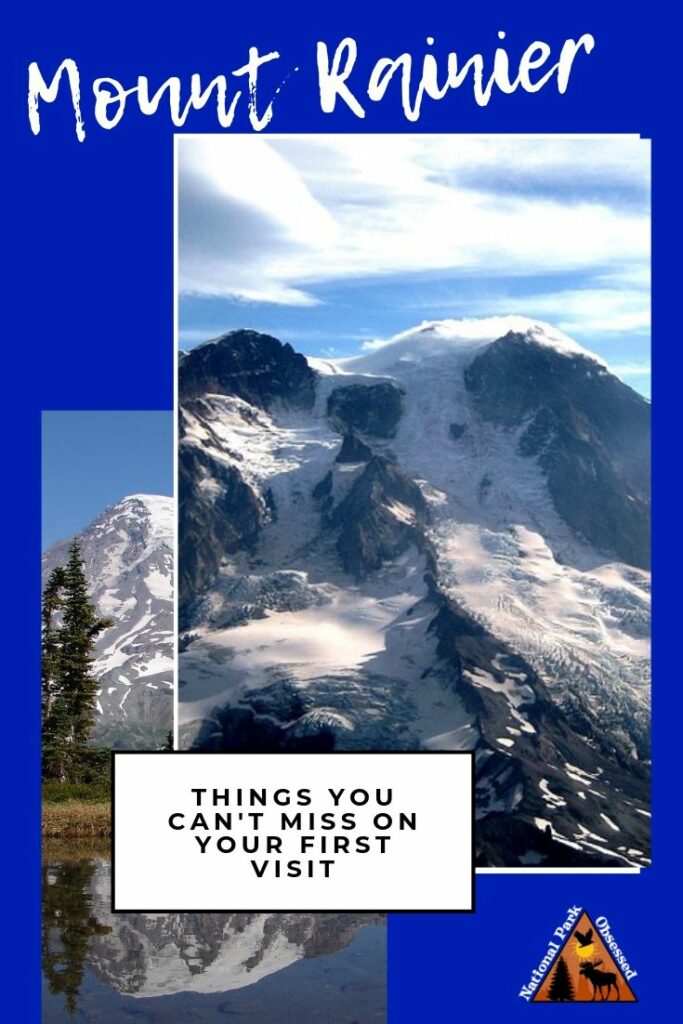
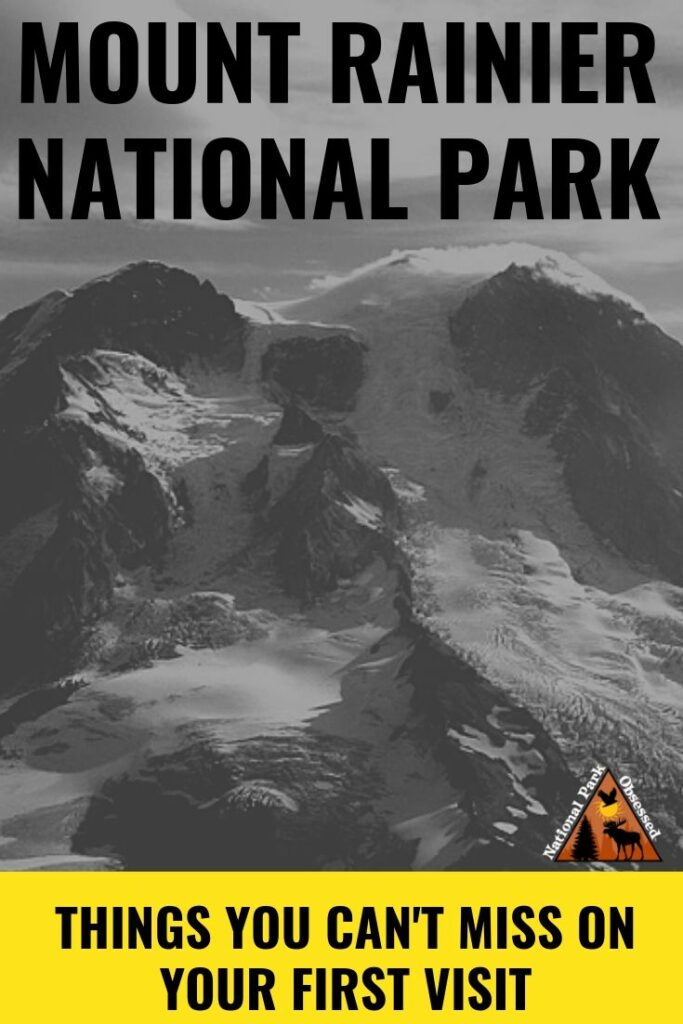
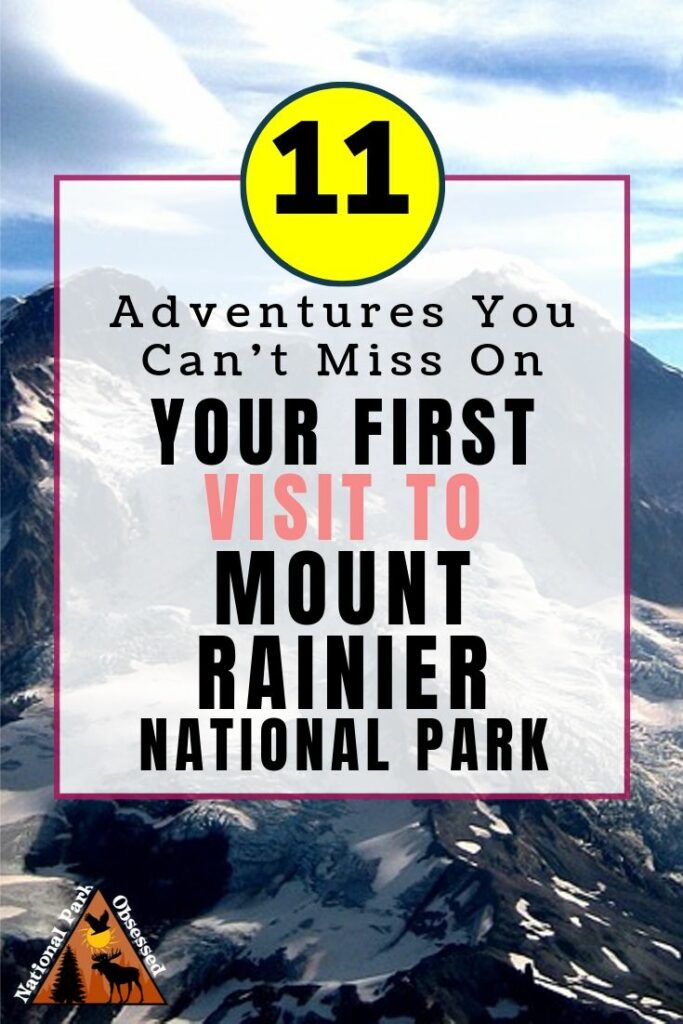
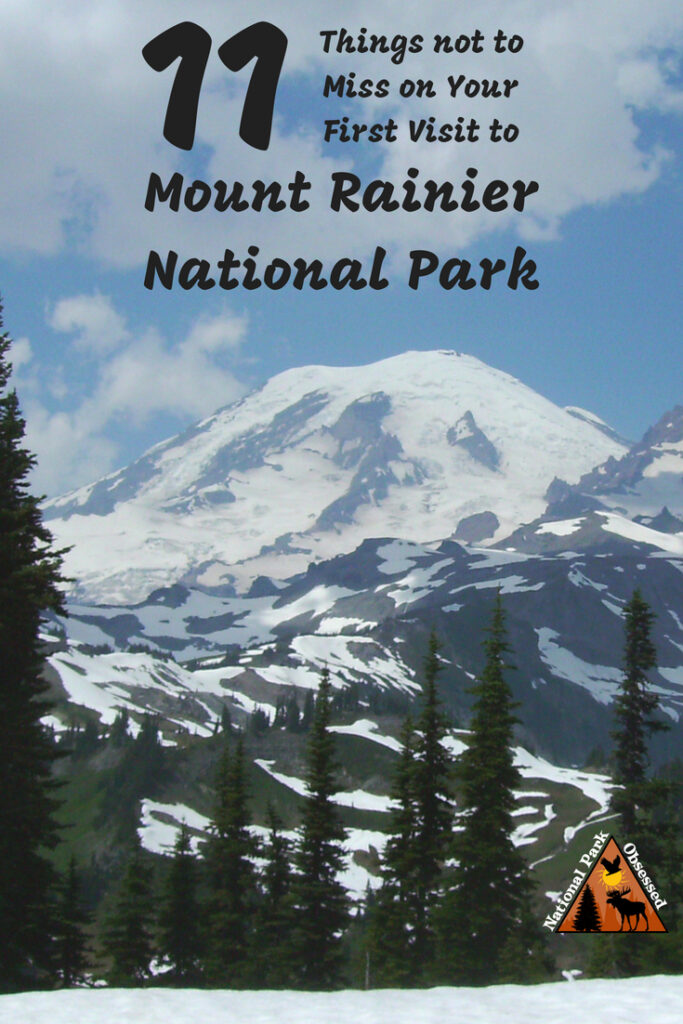
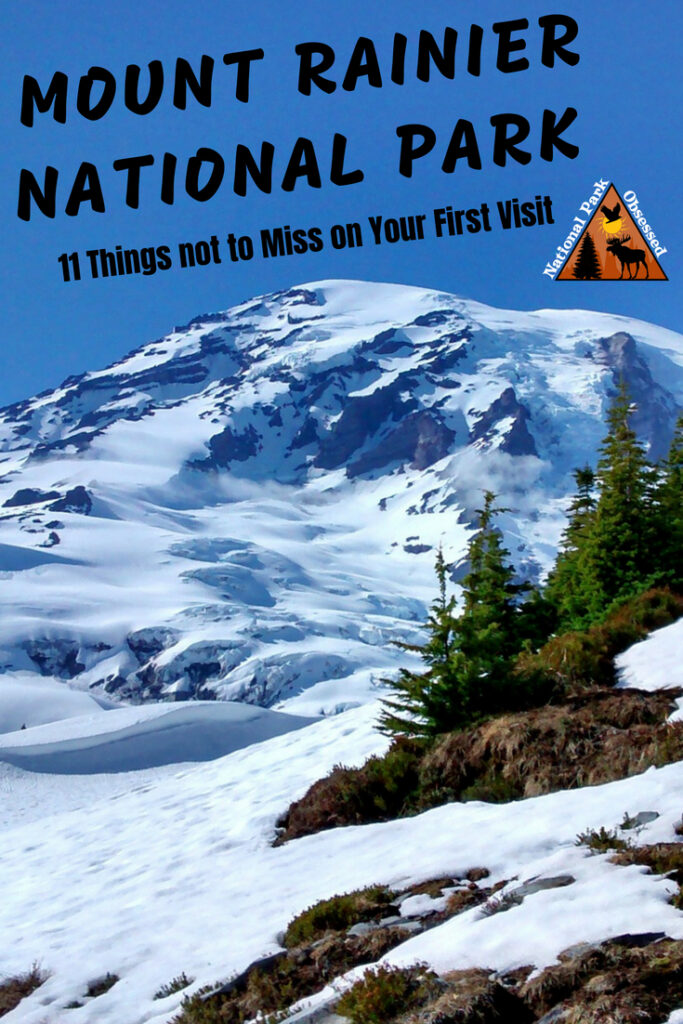
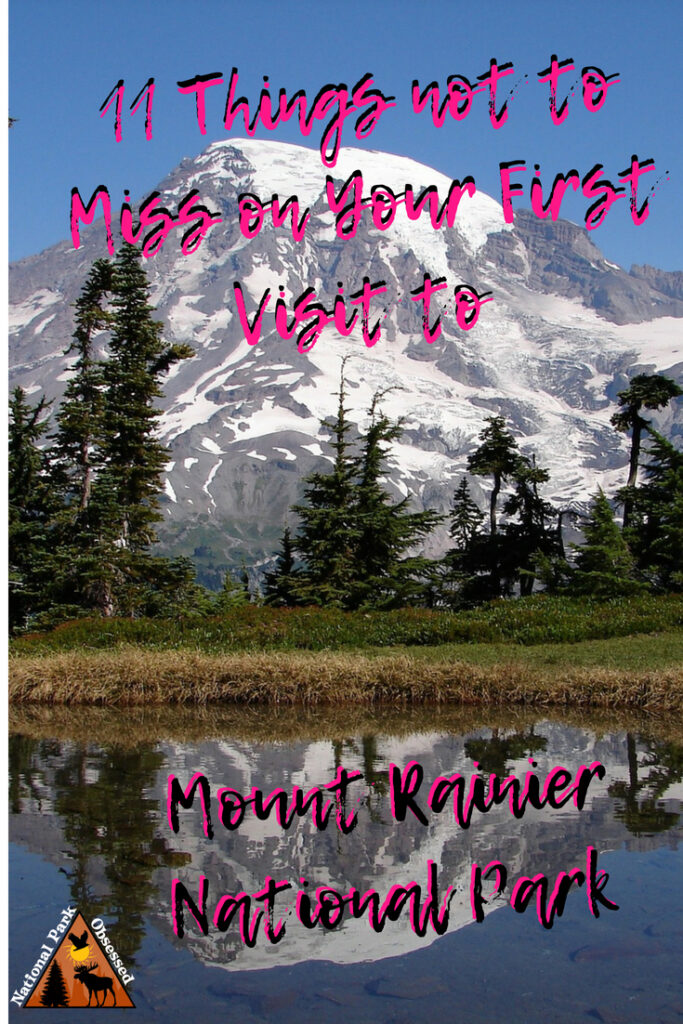
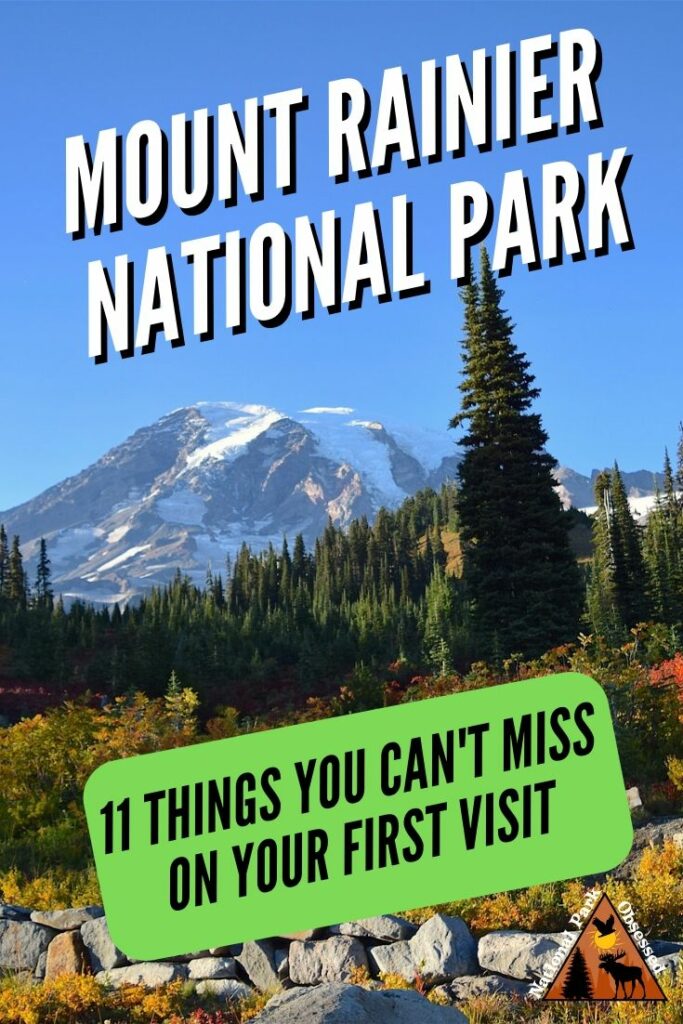
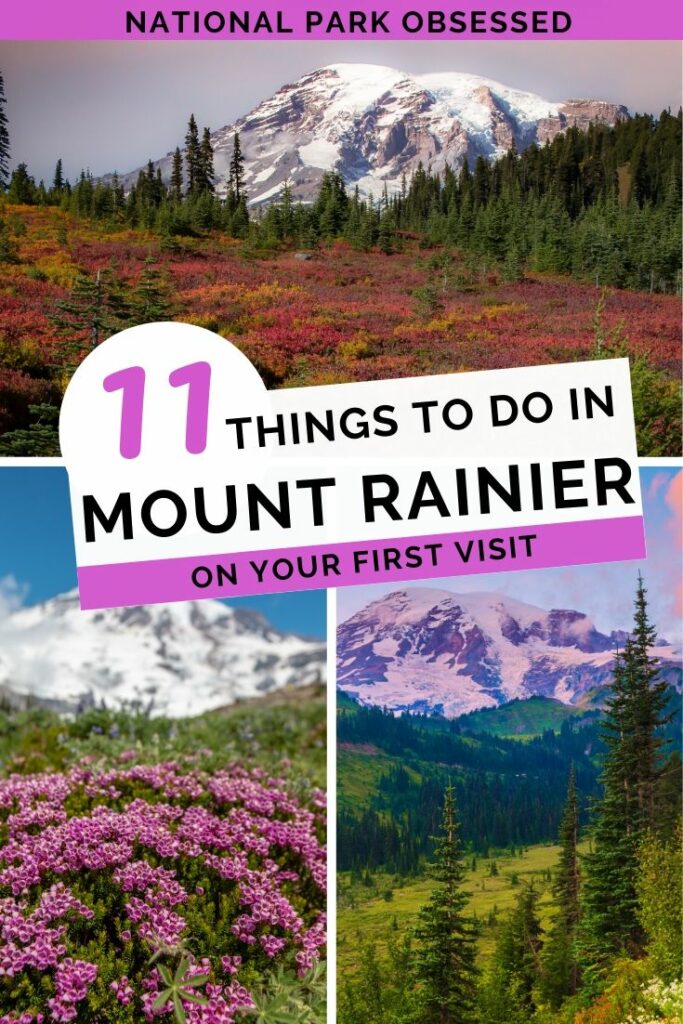
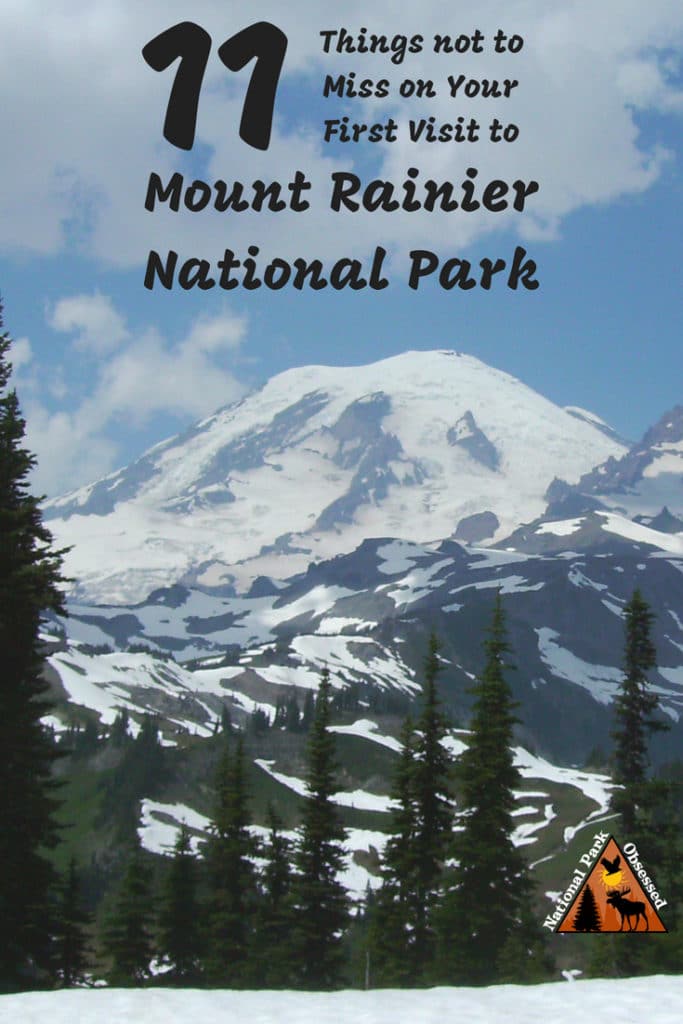
Planning on heading out to visit the mountain? In the state of Washington, there are many mountains but only one “the mountain.” Her name is Mount Rainier and this 14,411-foot volcano is a predominant feature in much of Washington’s skyline. Mount Rainier is part of the Cascade Mountain Range. She is the highest mountain in the range. The mountain and the surrounding glaciers are protected by Mount Rainier National Park. Mount Rainier is a playground for men and women of all ages. Climbers come from around the world to attempt a summit while hikers come to hike to remote mountain valleys, and others come to walk among the wildflowers. Here are my top 11 Things NOT to Miss on Your First Visit to Mount Rainier National Park.
This post was originally published on 13 August 2019. It was updated on 07 December 2019.
- Things to Know before you go to Mount Rainier National Park
- Getting to Mount Rainier National Park
- Where to Stay in Mount Rainier National Park
- What to pack for a visit to Mount Rainier National Park?
- 11 Things to do in Mount Rainier National Park
- Hike up Rampart Ridge
- Have Brunch at the Paradise Inn
- Spot a Rainbow at Narada Falls
- Get a close-up view of Mount Rainier from Panorama Point
- Go Glasading in the Muir Snowfield
- View the Wildflowers on the way to Myrtle Falls
- Visit the Nisqually Glacier
- Complete the Citizen Ranger Quest
- Have a Picnic in Summerland
- Trek to Silver Falls
- View Mount Rainier’s Refection at Reflection Lake
This post may contain affiliate links, meaning if you book or buy something through one of these links, I may earn a small commission at no extra cost to you! Read the full disclosure policy here
Best of Mount Rainier National Park in a Nutshell
Here are some of the best resources to plan your trip to Mount Rainier National Park. If you are new to the parks, National Park Travel Planning Bundle is the perfect resource to help you plan your dream trip, get it planned and reduce the stress of planning your National Park trip.
- Skip the Planning: Check out our pre-planned Mount Rainier National Park Itineraries for easy planning. For less than $6 a day.
- Best Things to Do: Skyline Trail Loop, Waterfall Chasing, Scenic Views
- Best Time to Visit: The best time and most popular to visit is between July and August. Most of the trails will be snow free, and you will have access to all the park roads. My favorite time to visit is June or September. You’ll still have some snow, but the crowds will be less.
- Entrance Fees: The entrance fee is $30 per vehicle or free with the America the Beautiful National Park Pass. This $80 pass is valid for 12 months and includes over 2000+ federal lands for free.
- Make sure you have a National Park Passport: Here is my favorite National Park Passport.
- How to Get There: There is no public transport to the park, but there are guided day trips from Seattle. Otherwise, you will need a vehicle to reach the park. Browse for deals on rental cars at RentalCars.com. Or rent an RV or campervan with RVshare or Outdoorsy.
- Best Airports: The closest airports are located in Seattle-Tacoma (SEA) and Portland (PDX) . Use Skyscanner to get the best prices on your flights.
- How to Get Around: There are five entrances to Mount Rainier; the Nisqually Entrance (southwest) is the most popular and provides access to the Paradise area. Paradise is also connected via seasonal roads with the southeast and east entrances. The northwest and Mowich Lake entrances are not connected to the other entrances.
- Where to Stay: The best place to stay is the Paradise Inn or National Park Inn. Outside of the park, Alexander’s Lodge or Whittaker’s Motel & Historic Bunkhouse. There are three seasonal campgrounds in Mount Rainier.
- Don’t forget travel insurance: I get my travel insurance through World Nomads.
- Nearby National Parks: Olympic, North Cascades, Crater Lake, Redwood, Lassen Volcanic
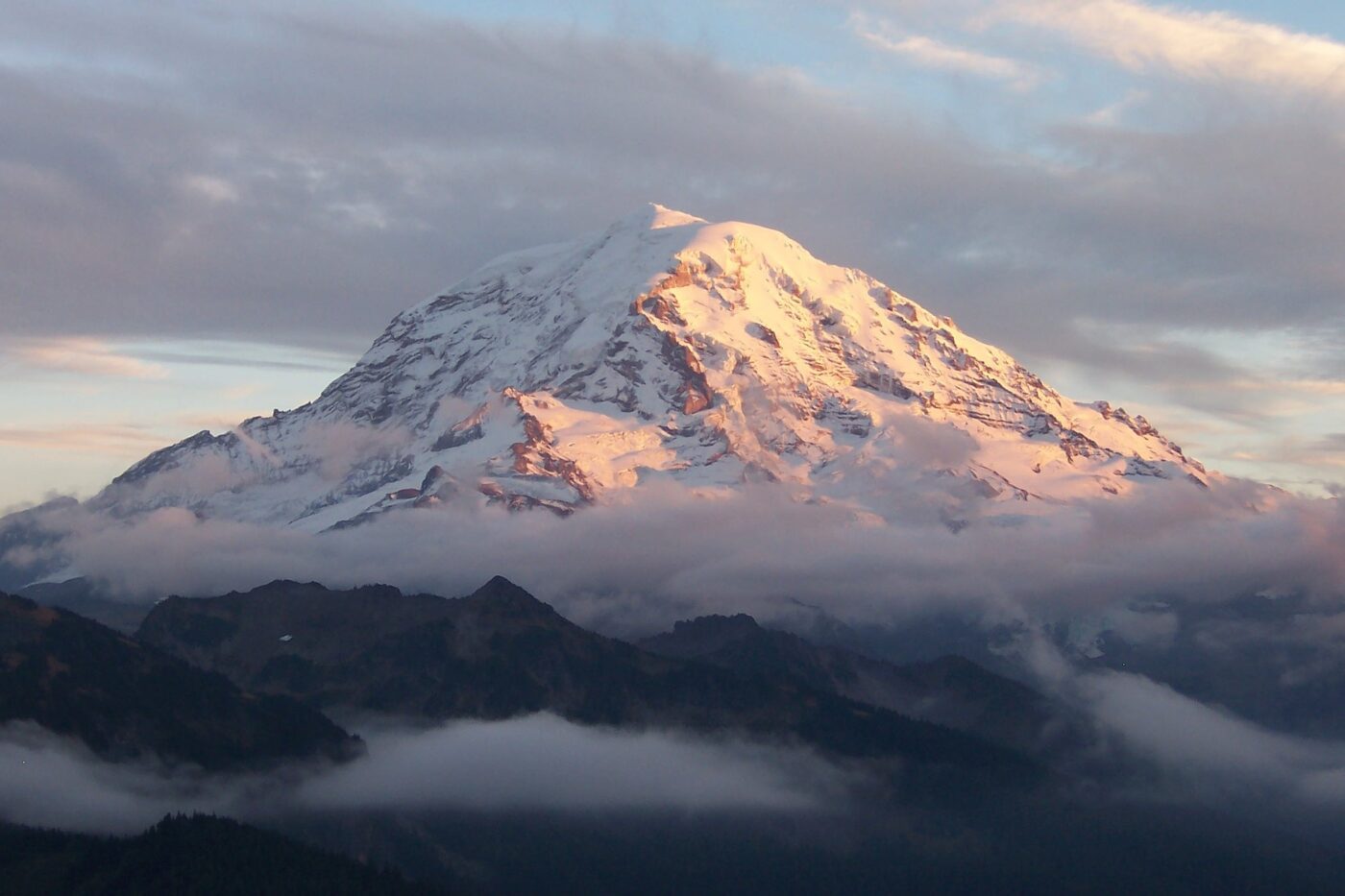
Things to Know before you go to Mount Rainier National Park
- Be prepared, even at the height of summer, it is possible that snow could be on hiking trails. Check with the rangers, if you are planning to play in the snow. Avalanches can and do happen in the park.
- The park is open year-round but many of the park roads are closed during the winter. The road to Paradise is only plowed during the weekends from October to May.
- Wear sunscreen when hiking and don’t forget to put it on your underarms and the bottom of your chin. Snow reflects the sunlight and can cause interesting sunburns.
- Carry and use sunglasses when hiking on snow. The sun reflecting off the snow can damage your eyes.
- Fill your gas tank before entering the park. There are no gas stations within the park.
- There are four campgrounds in the Mount Rainier and two park lodges.
- Visit one of the Mount Rainier National Park Visitors Centers for the latest park information.
Getting to Mount Rainier National Park
The closest major airport to Mount Rainier National Park is the Seattle-Tacoma Internationa Airport (SEA). It is located about 2 hours away from the main park entrance. The next closest major airport is the Portland International Airport (PDX). PDX is about two and a half hours away. There are several smaller airports closer to the park but they are small and services will be limited.
Estimated Drive time to Mount Rainier National Park
- Seatle, Washington – 2 hours
- Portland, Oregon – 2.5 hours
- Eugene, Oregon – 4.5 hours
- Spokane, Washington – 4.5 hours (to the East Entrance, closed during winter)
- Spokane, Washington – 6 hours (during winter)
- Boise, Idaho – 7.75 hours
Mount Rainier can be reached by public transportation but options are limited.
Currently, there is no public transportation within Mount Rainier National Park.
Best Guided Day Tours in Mount Rainier National Park
If you want to make your trip to Mount Rainier as easy and simple as possible, check out these amazing Mount Rainier Day Trips:
- Best of Mt Rainier National Park from Seattle: All-Inclusive Small Group Tour
- Mount Rainier National Park – Luxury Small Group Day Tour with Lunch
- Mount Rainier Premium Small Group Tour Gourmet Lunch Included
- Mt. Rainier Day Tour from Seattle
- 1-Day Mt. Rainier National Park Tour from Seattle, WA
- Private Mt Rainier National Park Day Trip from Seattle
- Mount Rainier Helicopter and Hiking Tour Exclusive Combo
Where to Stay in Mount Rainer National Park
Mount Rainier has four campgrounds spread out around the parks. One in each corner of the park.
Hotels in Mount Rainier National Park
- National Park Inn: Open year-round. This Historic Inn is located in Longmire on the southwest corner of the park. Read the reviews on TripAdvisor.
- Paradise Inn: One of the original “Great Lodges of the West.” Staying here is like walking back into time. Read the TripAdvisor Reviews or Book Now.
Ashford (near Longmire Entrance)
- Copper Creek Inn: A small inn and set of cabins just outside the park entrance. Highly Rated on TripAdvisor Reviews or Book Now.
- Whittaker’s Motel and Historic Bunkhouse: A historic bunkhouse that has been renovated at the heart of downtown Ashford. Read the TripAdvisor Reviews or Book Now.
- Alexander’s Lodge: A hotel with presidential history. Theodore Roosevelt once visited here. Read the TripAdvisor Reviews or Book Now.
Packwood (near Ohanapecosh Entrance)
- Packwood Lodge: Enjoy a small but modern hotel with a continental breakfast. Top-ranked hotel on TripAdvisor. Book Now.
- Hotel Packwood: A building with historic charm. The hotel is mall and elk are frequently on the law. Read the TripAdvisor Reviews.
- Mountain View Lodge: A family-friendly hotel with free wifi. Read the TripAdvisor Reviews or Book Now.
Eastside of the Park (near Sunrise / White River Entrance)
- Crystal Mountain Hotels: A rustic hotel with a relaxed atmosphere. Read the TripAdvisor Reviews or Book Now.
Where to Stay in Mount Rainier National Park
Mount Rainier National Park has several in park options for lodging. There are four campgrounds in Mount Rainier National Park and two lodges.
Learn more about Mount Rainier Camping
Hotels in Mount Rainier National Park
- Paradise Inn: One of the original National Park Grand Lodges. This historic lodge is located in the Paradise Valley and is surrounded by alpine meadows. Paradise Inn offers an amazing range of hiking trails just outside its front door. Only open during the late May to early October.
- National Park Inn: The National Park Inn is the only hotel open year-round in the park. This small historic lodge is located in Longmire. It has great views of Mount Rainier and access to the Longmire hiking trail. This inn is open year-round.
Hotels near Mount Rainier National Park
Hotels in Ashford (Nisqually: Southwest Entrance)
- Paradise Village: Paradise Village is a newly renovated hotel featuring modern amenities such as heated floors and bluetooth speakers. Some rooms have a fireplace. This is one of the most luxurious hotels near Mount Rainier
- Alexander’s Lodge: This historic lodge was built in 1912 near the entrance of Mount Rainier. The lodge offers a range of comfy hotel rooms and yurts. The hotel is a great base to explore the park.
- Check Prices and Availability Now
- Read Reviews on TripAdvisor.
- Whittaker’s Motel & Historic Bunkhouse : Whittaker’s Motel and Historic Bunkhouse is an affordable place to stay in Ashford. Whittaker’s offers cozy rooms with private baths in a historic bunkhouse built in 1912.
- Check Prices and Availability Now
- Read Reviews on TripAdvisor.
What to pack for a visit to Mount Rainier National Park?
- America the Beautiful National Parks Pass: Mount Rainier National Park costs $30 for a 7-day pass. If you intend to visit more than 3 National Park Services sites in a year, the American the Beautiful Pass will more than pay for itself.
- Water bottle or bladder: No matter how much or how little you are hiking in Mount Rainier. You need to be carrying water with you. For short hikes, a liter water bottle should be perfectly fine. I prefer Nalgene bottles because they are lightweight. If you would like to keep your water cooler, a Hydro-Flask would be perfect. For longer hikes, I recommend a 3-liter hydration reservoir.
- Snacks: There is a camp store in Longmire and limited supplies in the surrounding towns. I would plan on bringing all your snacks with you.
- Fruit: Pick hard fruits such as apples or pears. These hold-up in the heat and in packs without getting squished to mush. Another option is freeze-dried fruit. Freeze-dried strawberries are the BOMB. They are crunchy, sweet and the best part is they are lightweight and yummy. These are my new favorite trail snack.
- Vegetables: Cucumbers and carrots hold up well during hiking and in a hot car.
- Granola Bars: Take your favorite non-coated in chocolate granola bars. Anything coated in chocolate will melt and be a sticky mess. My favorite is a selection of Cliff Bars. They are great even when squished.
- Cooler: If you want to keep anything in your car remotely cool, bring a heavy-duty cooler with you. Put a bit of ice and a snack and a drink in the cooler and it will at least be not burning hot when you get back from your hike.
- Sunscreen: Mount Rainier is renowned for interesting sunburns. Have you ever burned the bottom of your chin? I have. The sunlight reflecting off the snow is BRUTAL. Be sure to bring plenty of sunscreen and bath any exposed skin in it (including undersides of arms and the bottom of chin)
- Sunglasses: Similar to sunscreen, you need a good pair of polarized sunglasses to protect your eyes from the glare of the sun and its reflection off the snow
- Hat: A good sun hat can double you sun protection on your face and neck. I would recommend a wide brim safari style hat. For added protection, I would go with sun hat with a cape.
- First Aid Kit: As with any outdoor adventure, accidents happen. It is better to be prepared and have a compact first-aid kit ready to help with any accidents.
- Flashlight: A flashlight is always nice to keep on hand for spontaneous sunrise or sunset hikes. I keep one in my day pack just in case I get distracted and stay out longer and later than planned. Here is a great all-weather flashlight.
- Day Pack: A good day pack can carry all your snacks, water, and other gear while exploring Mount Rainier National Park. I have had great use out of the REI brand day packs.
- Sturdy Hiking Shoes: Hiking in Mount Rainier requires sturdy waterproof shoes. For much of the year, you will experience snow on the trails or wet conditions from the snow melt. A sturdy pair of waterproof hiking boots will keep your feet dry and comfortable.
- Mount Rainier T-Shirt: Get your National Park Obsessed Washington National Parks T-Shirt to celebrate your trip to Mount Rainier.
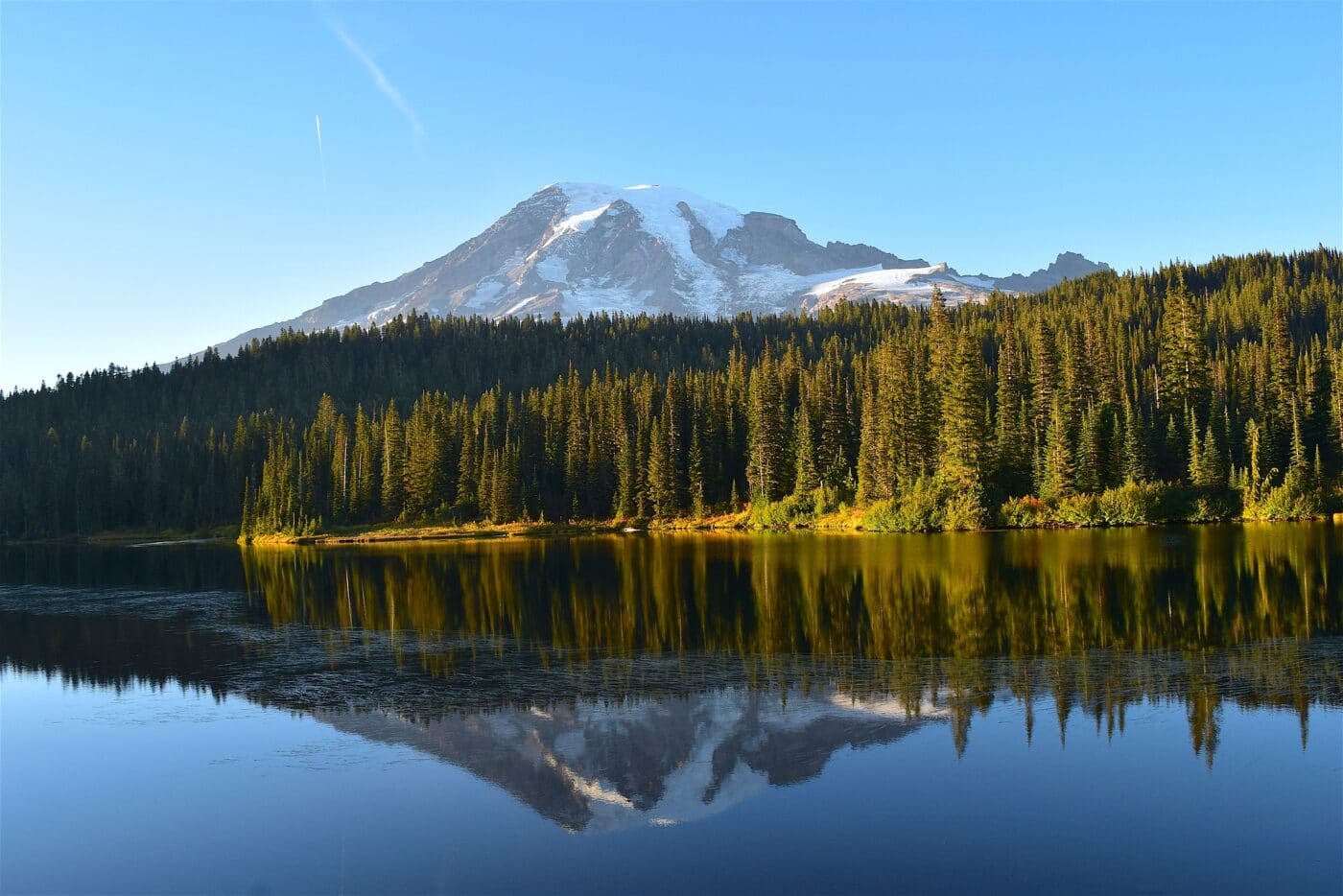
11 Things to do in Mount Rainier National Park
Hike up Rampart Ridge
Rampart Ridge Loop Trail starts across from the Longmire Historic Area. The 5.4-mile loop has about 1,300 feet of elevation gain. The first section of trail follows the Trail of Shadows. From the valley, the trail starts to climb to the top of the ridge. As you climb, enjoy seeing the forest and some interesting tree growths. Once you reach the top of the ridgeline, the views will open up. On a clear day, there are few places with a better view of Mount Rainier.
Have Brunch at the Paradise Inn
On Sunday mornings, make it a point to get to the Paradise Inn early. The Paradise Inn is one of the last remaining original “Great Lodges of the West.” Built-in the 1920’s in national park rustic style. Little has changed in the 100 years since the construction of the lodge. Walking through the lodge is like stepping back in time. Like the rest of the lodge, the dining room has changed little still offer rustic gourmet food. Sunday Brunch has a long history. Make time to stop and have a meal in this historic dining room.
Spot a Rainbow at Narada Falls
Narada Falls is one of the most accessible waterfalls in Mount Rainier. The falls is located just north of Cougar Rock Campground along the main road. The parking lot has a great view of the waterfall looking down. There is a bridge over the top Narada Falls, this bridge leads to a service road as well as access to Wonderland Trail. A short hike down leads to a trail junction. Wonderland heads off into the wilderness but a short spur trail leads to the best Narada Falls viewpoint. During the afternoons, it isn’t uncommon to see rainbows in the mist of Narada Falls.
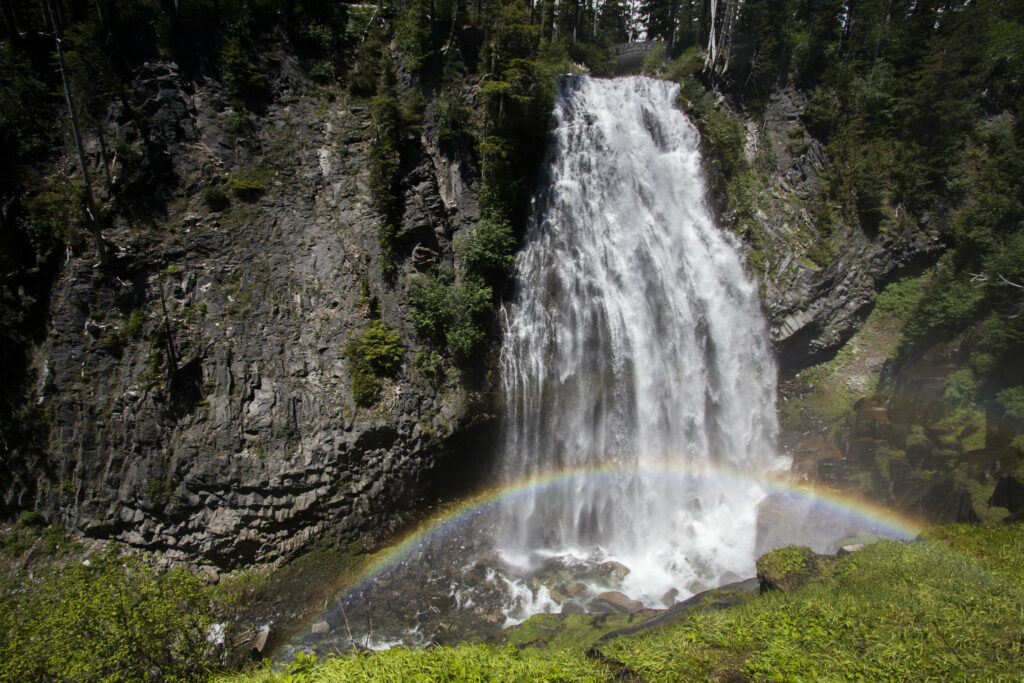
Get a close-up view of Mount Rainier from Panorama Point
Head up the Skyline Trail to take a tour of the Paradise area wildflowers on your way to the epic view from Panorama Point. Panorama Point has one of the best views in the park. You get to stand 6,227 ft up on Mount Rainier and overlook the small Tatoosh Mountain Range. On a clear day, it is possible to see Mount St. Helens and Mount Adams and on really clear days Mount Hood. If you turn around, you are greeted with an up close and personal view of Mount Rainier. The view is truly panoramic. When you are done enjoying the view don’t head back down the mountain. Take the junction with Pebble Creek Trail.
Go Glasading in the Muir Snowfield
Even at the height of summer, there is snow on Mount Rainier. If you make the trek to Panorama Point, head up the Pebble Creek Trail. The trail leads to the Muir Snowfield. The route up the Muir Snowfield to well defined. Please stay on this route as crevasses can be hidden underneath the snow. As you hike up the snowfield, you will not a few stops that are made for glasading. Glasading is a fancy word for sliding on your but in the snow on a mountain. No joke, these areas are designed for you to have fun sliding on the snow.
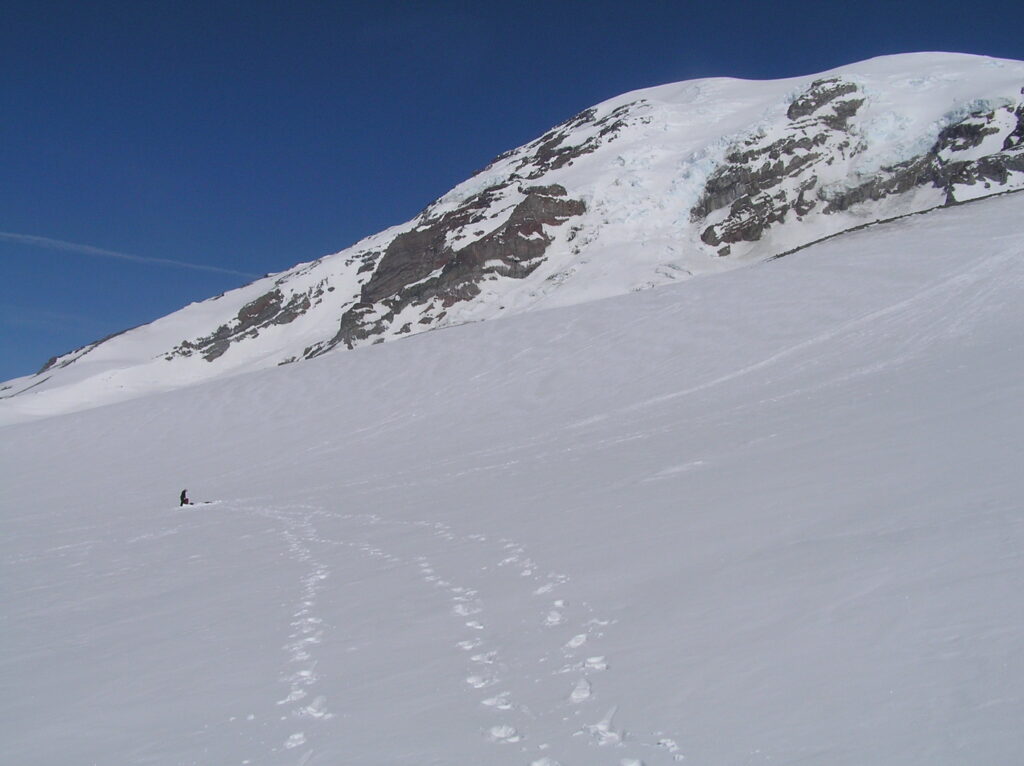
View the Wildflowers on the way to Myrtle Falls
Head out into the wildflower meadows in the Paradise area. Myrtle Falls is one of the iconic views in Mount Rainier. The glorious Myrtle Falls is located about 0.4 miles from the Paradise Inn along the Skyline Trail. After enjoying the walls continue on the Skyline Trail for to check out a few other must-see sights in Mount Rainier National Park.
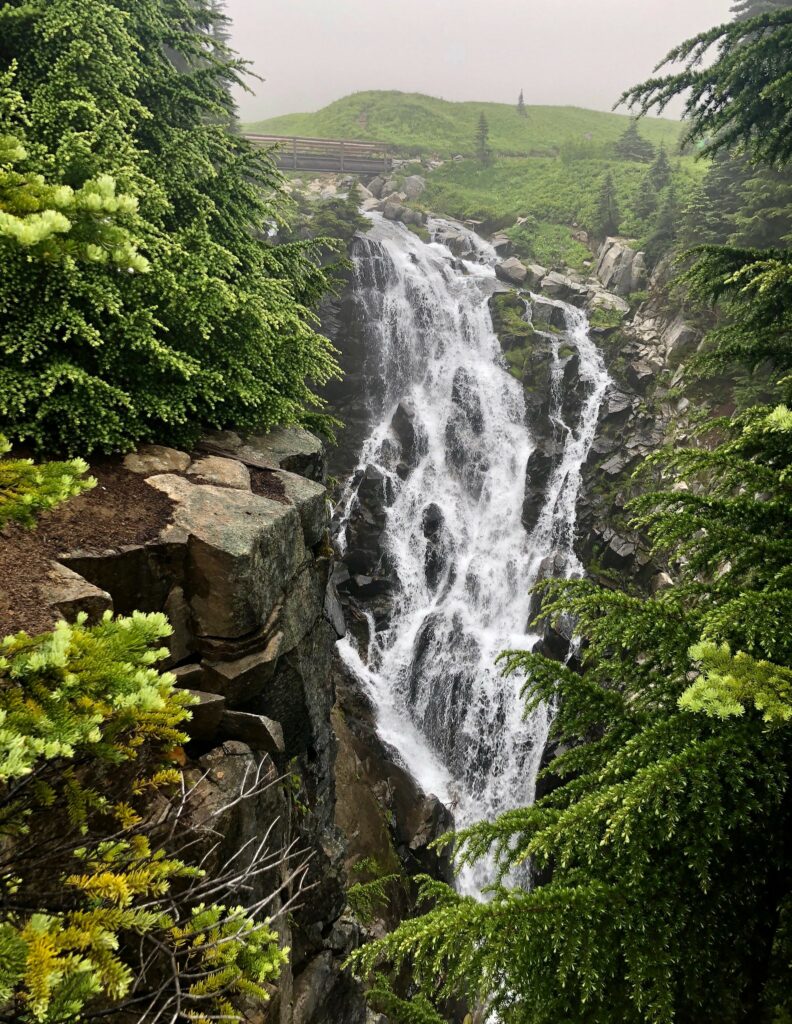
Visit the Nisqually Glacier
Nisqually Glacier is one of the largest glaciers on Mount Rainier and one of the most accessible glaciers. The easiest way to see the Nisqually Glacier is to hike the 2.2-mile Nisqually Vista Trail. The loop trail whines around the wildflower meadows. The trail has several overlooks that provide a grand view of the Nisqually Glacier. Don’t be afraid to stop and enjoy the view. The glacier will not have the amazing blue that you see in pictures of the waterfront glaciers of Alaska, but Nisqually has the same landscape changing power. The glacier is the headwater for the Nisqually River that runs from the park to the Puget Sound.
Complete the Citizen Ranger Quest
With the popularity of the Junior Ranger programs at an all-time high, many parks have started creating programs aimed at adults. Mount Rainier has created the Citizen Ranger Quest. There is a list of 17 different activities. To earn the Citizen Ranger Patch, you have to complete four quests. The quests range from an easy 30 minutes to upwards of two hours. There are quests in all the areas of the park but some can only be completed during the summer when the wildflowers are in bloom.
Have a Picnic in Summerland
Mount Rainier has a lot of wonderful hiking. Some of the best hiking is located along the 92-mile Wonderland Trail. The best section of Wonderlands is between Sunrise and Box Canyon. The views are outstanding. It is a two-day backpack to hike the full section from Sunrise to Box Canyon but you don’t have to hike the full section. There is an 8.4-mile round trip hike from the trailhead just north of the White River Entrance that connects to the Wonderland Trail. The trail goes up to the Summerland Camp near the subalpine meadows of Summerland. This is an excellent day hike and the Summerland meadows make a great spot for lunch with a view of Mount Rainier.
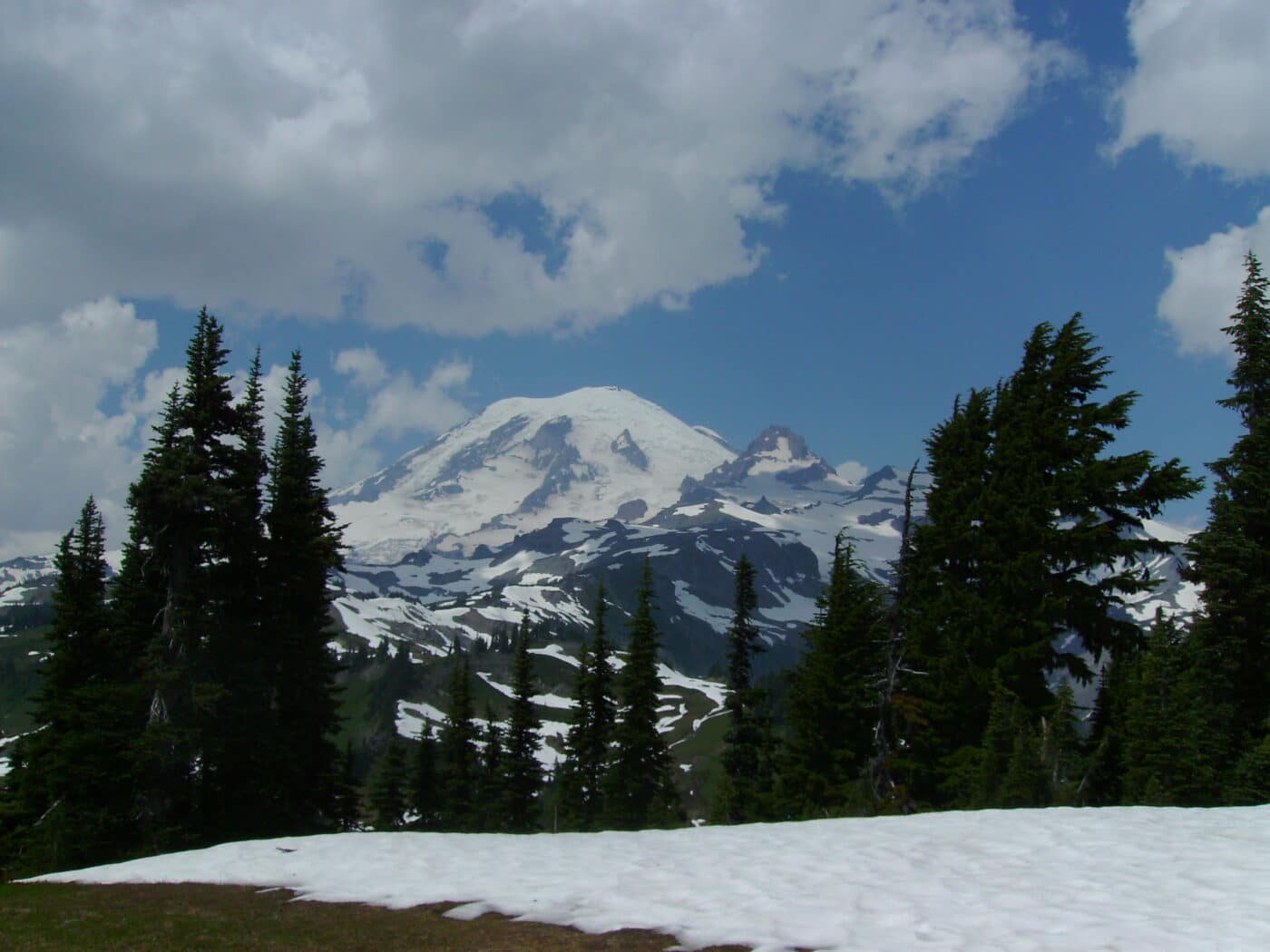
Trek to Silver Falls
Silver Falls is one of my favorite waterfalls hikes. The falls are reached by a 3-mile loop trail starting from the Ohanapecosh (oh-ha-nah-pa-cosh) Visitor Center. The trail pass the historic Ohanapecosh Hot Springs which were reported to have therapeutic powers. Today, swimming in the hot springs isn’t allowed but they are still a sight to enjoy. The trail winds thru the old growth forests of the Ohanapecosh region o their way to Silver Falls. With a 40 foot drop, Silver Falls isn’t the tallest waterfall but it makes for an impressive site.
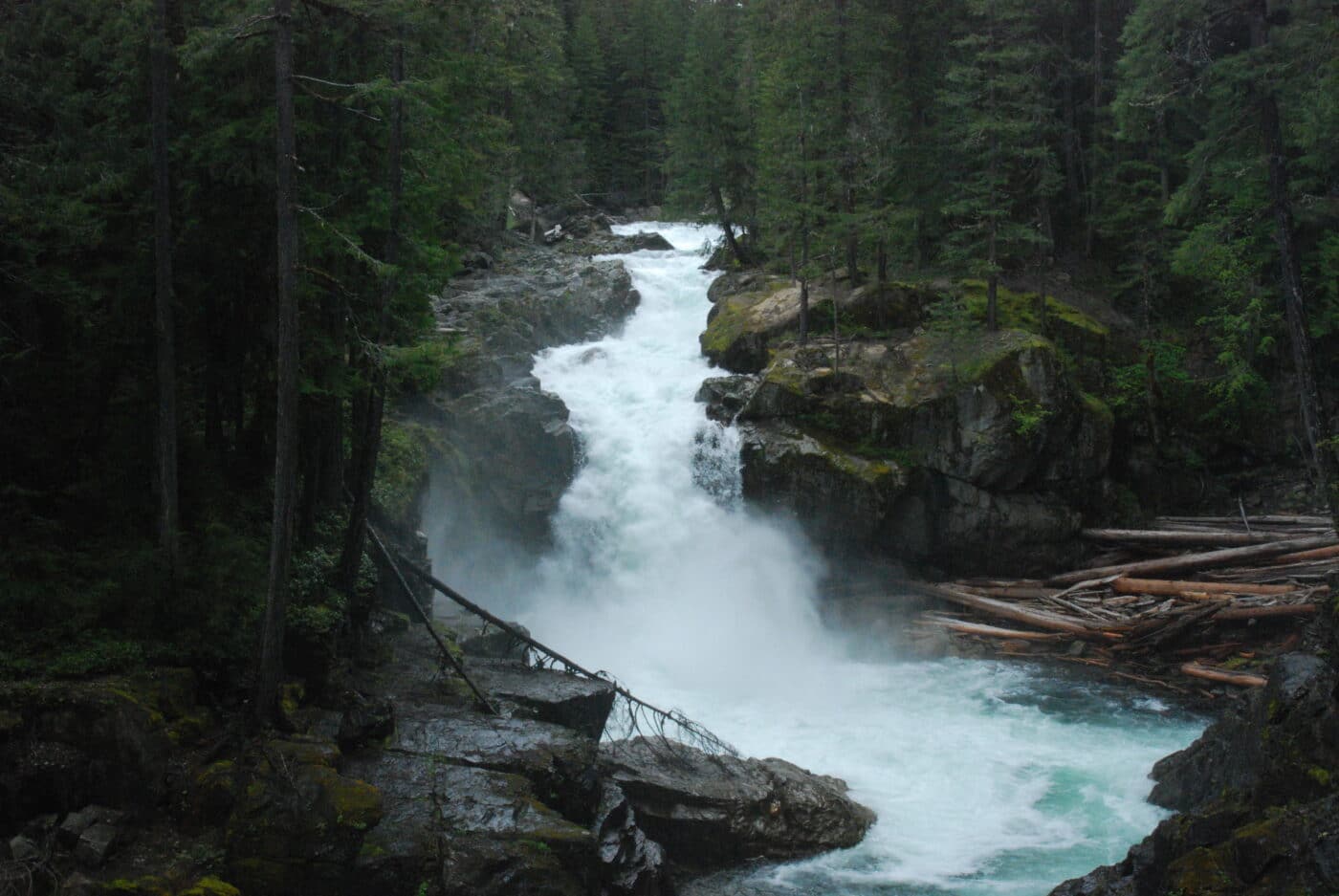
View Mount Rainier’s Refection at Reflection Lake
Perhaps the most iconic views of Mount Rainier are Mount Rainier being reflected in a lake. The park is home to many lakes but seeing that perfect reflection takes a little luck and some skill. To get that mirror like refection, you need a perfectly calm day and a smooth as glass lake. One of the best lakes for seeing the reflection is super early in the morning at Reflection Lake.
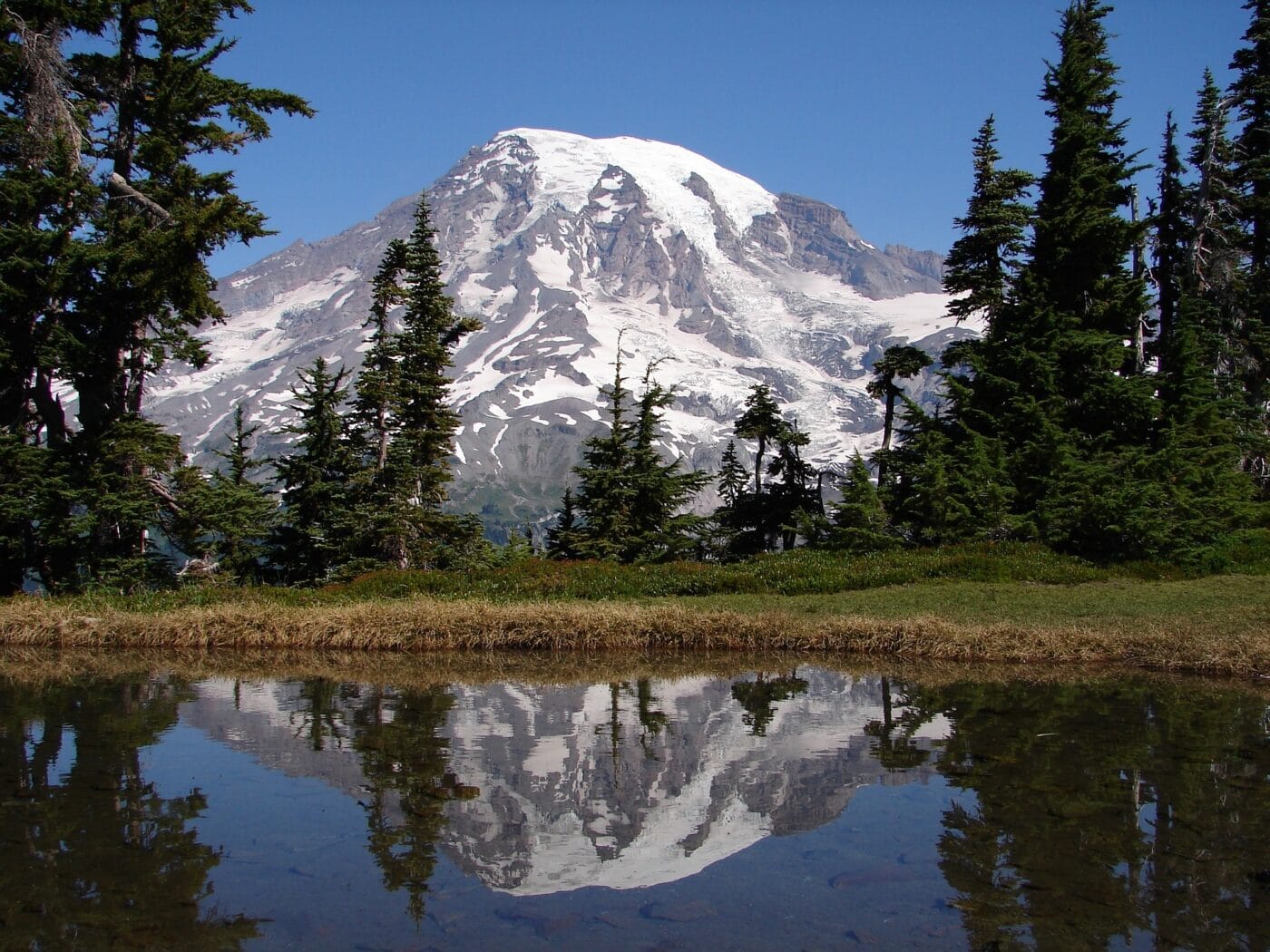
Get your National Park Obsessed Gear
What do you want to do in Mount Rainier? Did I miss anything that should be on the Things Not to Miss on Your First Visit to Mount Rainier National Park list?
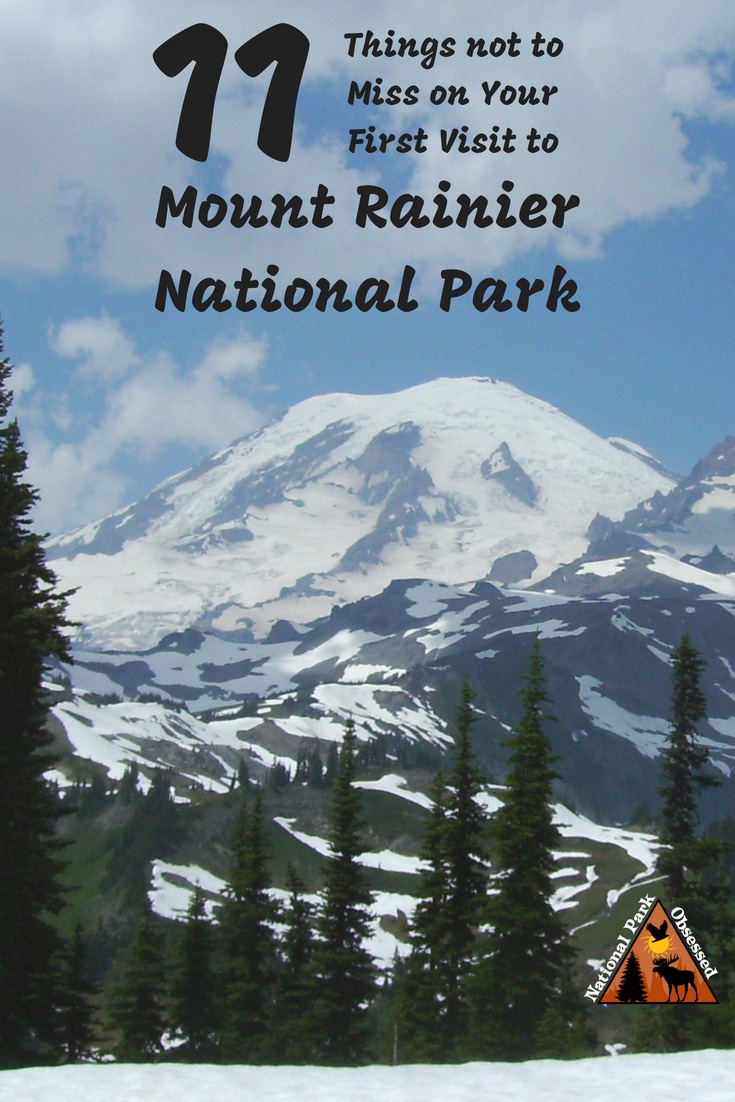
Jennifer Melroy
Hi, I'm Jennifer!
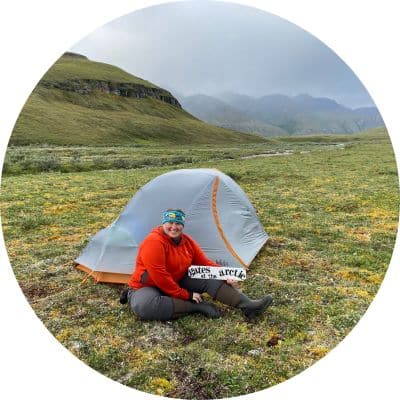
Welcome to the wonderful world of National Parks. I'm here to help you plan your NEXT amazing adventure through the United States National Parks and beyond. I want the national parks to be accessible to all.
I live in Tennessee, and when I'm home, you can find me hiking in the Smokies and the Cumberland Plateau.
58/63 National Parks
250+/423 National Park Units
Want to know more? Start Here.
Explore More
ACKNOWLEDGEMENT OF LAND
On this site, we promote travel to the United States and beyond that are the traditional lands of Indigenous and First Nations peoples.
With respect, I make a formal land acknowledgment, extending my appreciation and respect to these lands’ past and present people.
To learn more about the people who call these lands home, I invite you to explore Native Land.
DISCLAIMER
National Park Obsessed assumes no responsibility or liability for any errors or omissions in the content of this site (NationalParkObsessed.com). The information contained in this site is provided with no guarantees of completeness, accuracy, usefulness or timeliness. You are encouraged to conduct your own due diligence before acting on the information provided on this site and should not rely on the opinions expressed here.
There is an inherent risk in all outdoor recreation activities, the reader assumes all responsibility for their own personal safety.
DISCLOSURE
We are a participant in the Amazon Services LLC Associates Program, an affiliate program designed to provide a means for us to earn fees by linking to Amazon.com and affiliated sites.
Privacy Policy • About Us • Contact
Select stock photography provided depositphotos
Copyright ©2023 National Park Obsessed, LLC
Privacy Overview
Get a FREE 63 National Park Checklist
KICK START YOUR Planning
with the Ultimate National Park Planning Bundle.
This 162-page bundle includes a must see guide for each National Park along with a travel planner and the Beginners Guide to Planning a National Park Trip Planning eBook
Last Updated on 20 Sep 2022 by Jennifer Melroy

